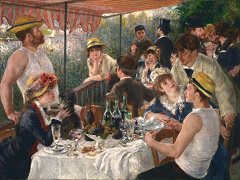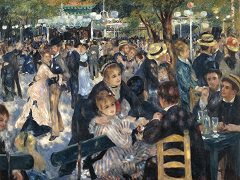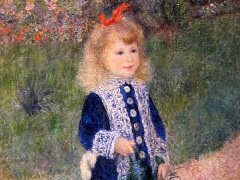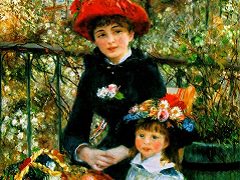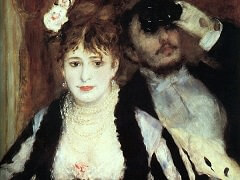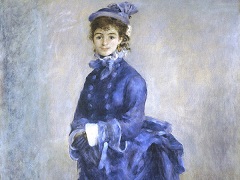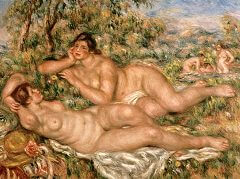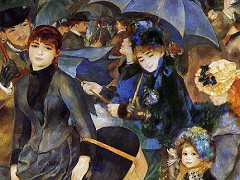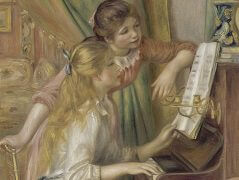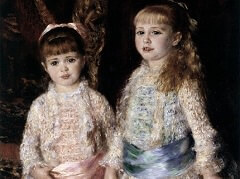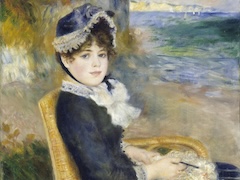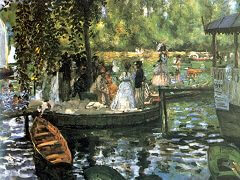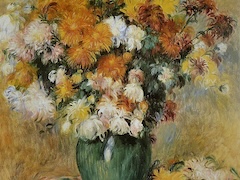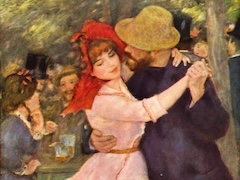Woman at the Fountain- by Pierre-Auguste Renoir
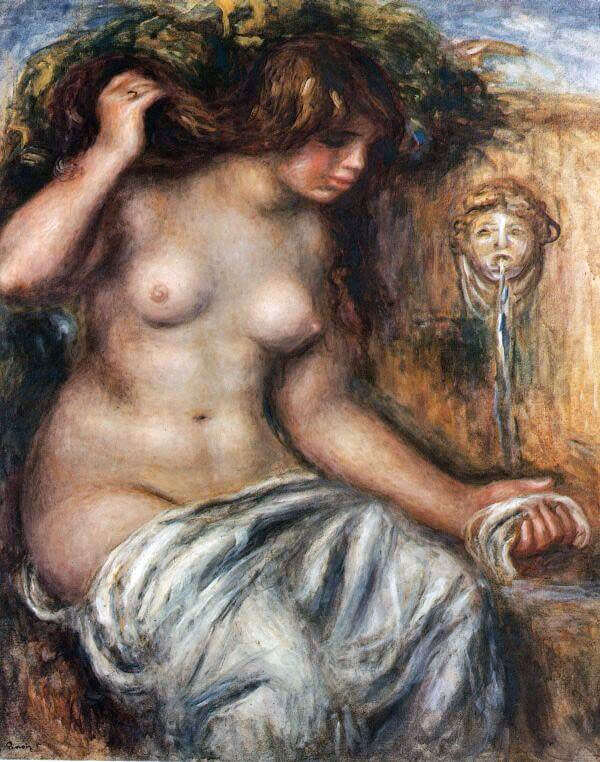
The guiding principle of most of Renoir's later work might be summed up in the word "breadth." We have already seen how he broadened the poses of his portrait figures until they occupy the whole of the canvas; but this characteristic is much more than an obvious expansiveness. His color broadens out in the 1900s, and the small prismatic notes give way to simpler color areas in which a single hue is extended through all its nuances. The brush strokes themselves seem to have been made by a wider brush, and the stroke is less often a precise calligraphy: instead, there is something of a scrubbed effect.
The figures, as in the picture opposite, now are larger in their structure, and their curves are fuller and simpler: "correct" anatomy yields to amplitude. The figures suggest womanhood rather than femininity. The modeling, which in Renoir's earlier works often gave one the feeling that the other side of the figures might be flat, as in relief sculpture, now is generously rounded in form. Even the conception of representation is broadened. For Renoir has painted this figure not as seen from a single, fixed viewpoint: the head is side view, the torso almost front view, one breast front view and the other side view, and the legs quite flat and also side view. In this connection, one is reminded of archaic art with its disregard for fixity of viewpoint.
The landscape, too, becomes more expansive, composed of fewer individual elements, and in keeping with this broadening out, Renoir's late figures and backgrounds flow into one another through blurred or ambiguous outlines. It is almost as though he is painting nature as a single, all-pervasive substance; and this substance gains articulate-ness through its more or less vague resemblance to trees or ground in some places, while elsewhere it resolves itself into the freely shaped forms of the human figure; but in essence it is the same basic stuff.
It seems logical that Renoir, finding the earth and its inhabitants beautiful, should arrive at a conception of the oneness of all nature.

